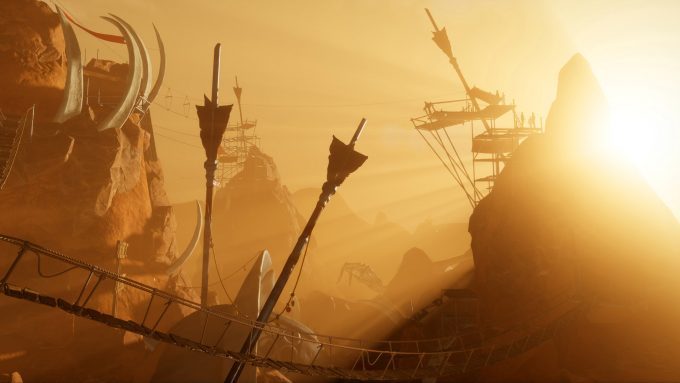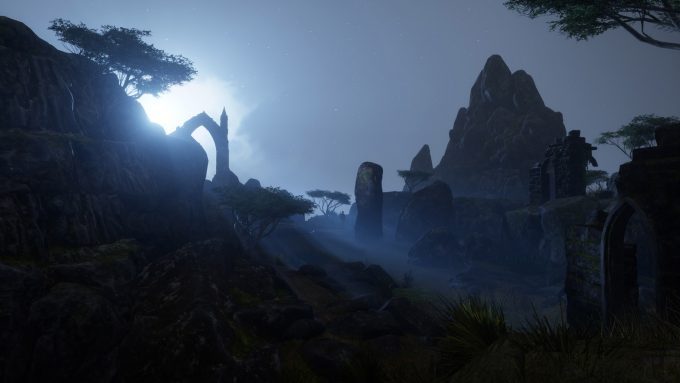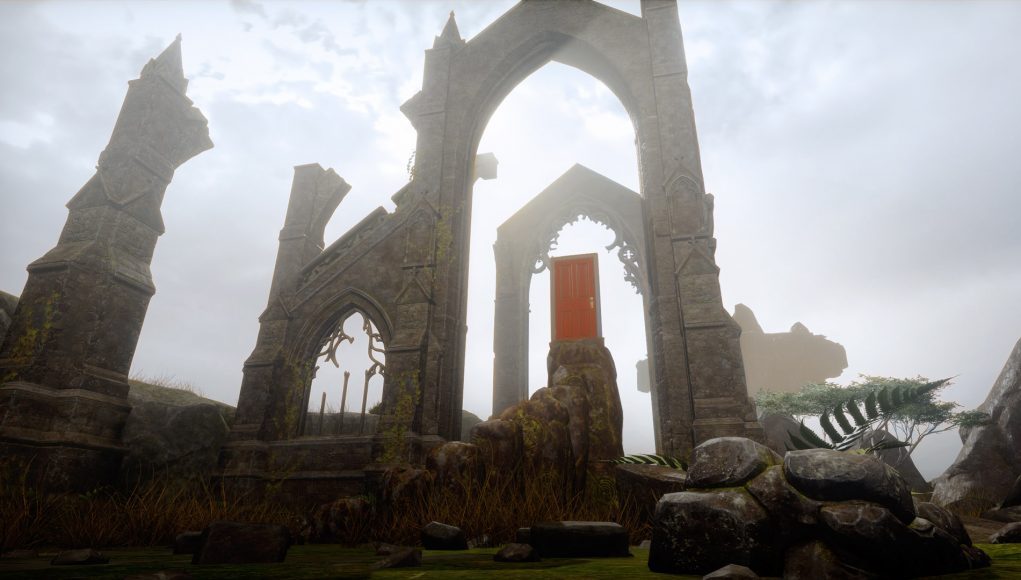Stepping Inside of Sansar Creations
 Linden Lab invited the first creators to Sansar starting in 2015. As of 2017, the company has granted access to 1,000 creators, and says some 10,000 have signed up requesting access. So far the public is not allowed inside, and the company is keeping a tight wrap on what it actually looks like and how it works.
Linden Lab invited the first creators to Sansar starting in 2015. As of 2017, the company has granted access to 1,000 creators, and says some 10,000 have signed up requesting access. So far the public is not allowed inside, and the company is keeping a tight wrap on what it actually looks like and how it works.
At the company’s offices this week, Altberg took me on a guided tour inside of Sansar. We both wore VR headsets (for which Sansar is built from the ground up) in separate rooms, complete with VR controllers. He took me to a number of virtual worlds made by third party creators, and though I couldn’t capture what I saw, I can tell you about it.
The graphics are actually quite good; this was a major criticism of Second Life, especially as it aged. Altberg, though, says that Sansar is architected in a number of different ways that will let its graphical capabilities scale more easily over time, whereas Second Life had design hurdles which prevented it from doing so. That’s important for a virtual world platform which hopes to be used by millions long into the future.
With the VR controllers I was able to navigate Sansar’s basic interface and interact with objects inside the virtual spaces. Altberg also showed me how the controllers can be used to place and manipulate objects in Sansar’s ‘edit’ mode, which allows some world-building functionality using existing assets.
Inside the virtual spaces we visited I could push, pick up, and throw objects. For now the link between my hand movements and the objects is quite sluggish. One space I saw had a bean bag toss game set up, but the physics weren’t refined enough yet to practically play it. Altberg says a soon to release update is going to massively tighten up the physics interactions such that games like bean bag toss would really be enjoyable. I hope so, because I love bean bag toss.
Giant Movie Theater
The first place I saw was a movie theater. A massive screen sat in a vast outdoor expanse with the night sky overhead. The seats in front of the screen were mostly covered over in windswept sand; as if there was once a huge theater that had deteriorated long ago, save for the screen, seats, and a huge flight of stairs leading down to them. The screen itself really felt massive (I’ve seen a number of other movie-theater VR experience that for some reason didn’t give a good sensation of scale). The screen was streaming a video from YouTube and the audio was playing throughout the entire space. Altberg said creators will soon be able to set virtual sound sources in Sansar so that the theater could have virtual speakers from which the sound originated.
Photogrammetry Tomb
Next was an Egyptian tomb which Altberg said was a real space that had been captured with photogrammetry. As we explored the tomb’s hieroglyphic-covered corridors together it became apparent that Sansar has 3D positional audio built it, allowing me to easily tell where Altberg was even when I wasn’t looking at him. That’s important not only because it helps your mind map the space and people around you more easily (which adds to immersion), but also because in multi-user scenarios, it’ll be much easier to tell who’s talking (which is also helped by automatic lip syncing).
Videogame Village
The next space we visited was a beautiful world that looked like a mashup between the Ocarina of Time (1998) and Jackson’s Lord of the Rings aesthetic. It was a bright and cheery village full of green foliage and earthen homes built into the sides of hills; a series of small foot bridges arched across the roofs of one home to the next. The space was very dimensional, with little paths winding up hills here and there, taking us to comfortable nooks enclosed with trees. The space had a definite stylized videogame look to it, but even though it wasn’t aiming for realistic visuals, it was probably the most charming and beautiful place I saw during my tour. In the center of town we came across a big monument of a cutlass that was sticking tip-down into the ground. Water cascaded down from the handled in ordered lines, and poured into pools at the base of the monument. Although the entirety of this virtual space was uninhabited at this stage, it called out to be the starting point of a great adventure.
You’ll note from the descriptions that all three creations I saw varied widely from one to the next, both visually and functionally. Altberg said that Sansar aims to be “style agnostic,” leaving the creator largely unconstrained when it comes to the look and feel of each creation.
– – — – –
 From my glimpse of Sansar, I’m very excited to see what creators will build on the platform. I know that the Videogame Village space I described will be even better once it’s inhabited with other virtual users, and once it has some function beyond just being a charming virtual space. And that’s just one world among many that will be built atop Sansar.
From my glimpse of Sansar, I’m very excited to see what creators will build on the platform. I know that the Videogame Village space I described will be even better once it’s inhabited with other virtual users, and once it has some function beyond just being a charming virtual space. And that’s just one world among many that will be built atop Sansar.
Interested creators can sign up to get early access to Sansar today, and the rest of us will be able to step into these virtual worlds (and even try making our own) when the platform goes public in the first half of 2017.







